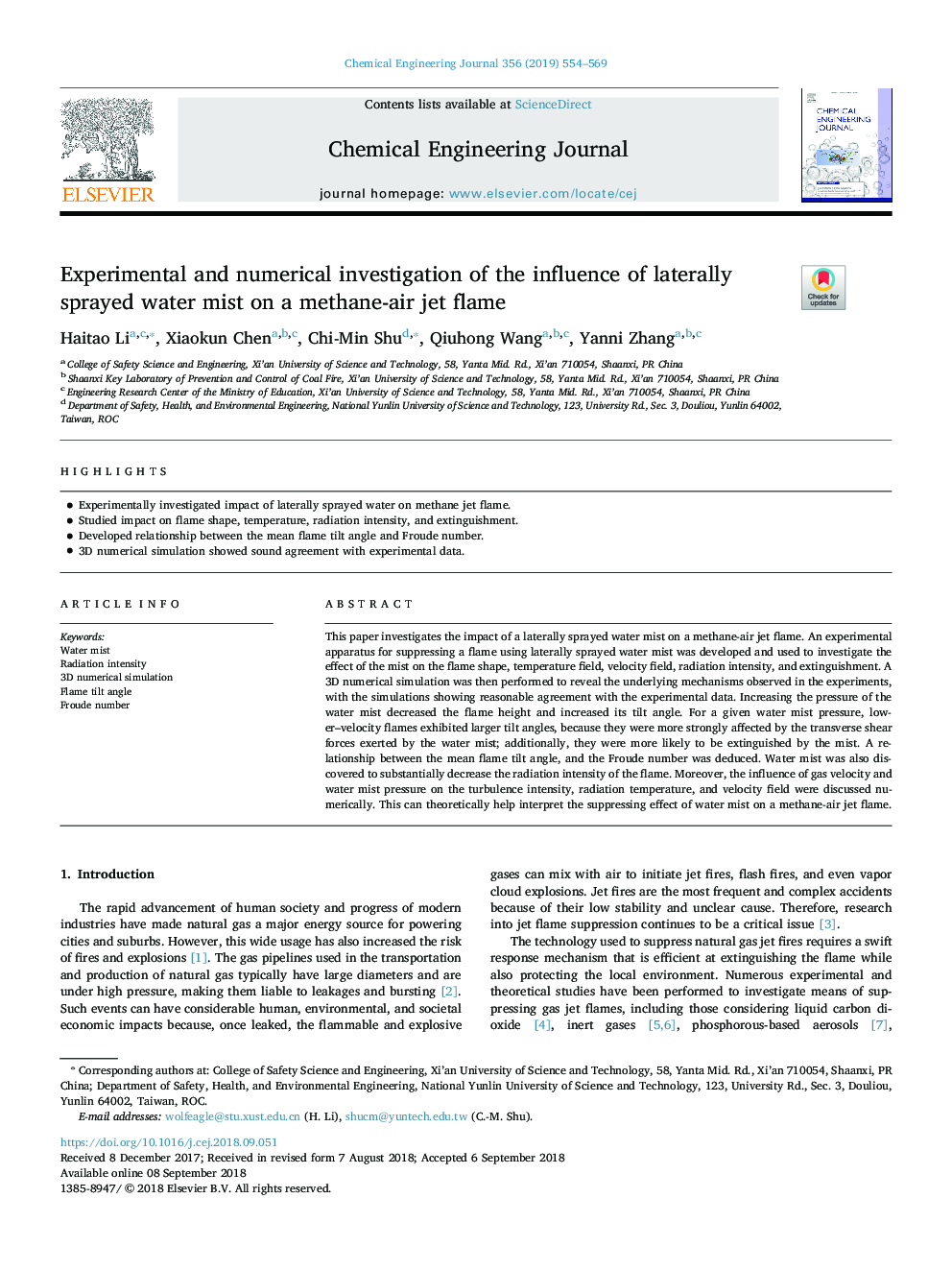| Article ID | Journal | Published Year | Pages | File Type |
|---|---|---|---|---|
| 10145277 | Chemical Engineering Journal | 2019 | 16 Pages |
Abstract
This paper investigates the impact of a laterally sprayed water mist on a methane-air jet flame. An experimental apparatus for suppressing a flame using laterally sprayed water mist was developed and used to investigate the effect of the mist on the flame shape, temperature field, velocity field, radiation intensity, and extinguishment. A 3D numerical simulation was then performed to reveal the underlying mechanisms observed in the experiments, with the simulations showing reasonable agreement with the experimental data. Increasing the pressure of the water mist decreased the flame height and increased its tilt angle. For a given water mist pressure, lower-velocity flames exhibited larger tilt angles, because they were more strongly affected by the transverse shear forces exerted by the water mist; additionally, they were more likely to be extinguished by the mist. A relationship between the mean flame tilt angle, and the Froude number was deduced. Water mist was also discovered to substantially decrease the radiation intensity of the flame. Moreover, the influence of gas velocity and water mist pressure on the turbulence intensity, radiation temperature, and velocity field were discussed numerically. This can theoretically help interpret the suppressing effect of water mist on a methane-air jet flame.
Related Topics
Physical Sciences and Engineering
Chemical Engineering
Chemical Engineering (General)
Authors
Haitao Li, Xiaokun Chen, Chi-Min Shu, Qiuhong Wang, Yanni Zhang,
